The planned burning of Sullington Warren heather that was reported here in January 2020 did not happen. Wet weather prevented the work being carried out and this was followed in March 2020 by the start of the COVID-19 pandemic.
The mowing of strips in the heather did happen in order to produce the ‘carpet squares’ in preparation for burning. Unfortunately, visitors to Sullington Warren decided to treat these mowed strips as ‘paths’ and walked across the heather beds causing further deterioration of the heather. To stop this happening the heather beds around The Green were, this year, fenced off in order to give the heather a chance to recover. Unfortunately, the combination of heather beetle, people taking a ‘short cut’ across the heather beds rather than using the established paths, dog walkers allowing their dogs to foul the heather beds thereby increasing the nutrients in the soil to the detriment of the heather, plus the now regular summer drought, have taken their toll on the heather which no longer provides the quality heath land habitat it did just a few years ago, nor the blaze of colour in the late summer and early autumn.
With lowland heath being one of the world’s rarest habitats and particularly important for reptiles (of which there are six native species in the UK, all of which are rare and threaten) it is hoped that with careful management and cooperation from the public, this patch of lowland heath in Storrington will again become a place to see amazing plants and animals just a short distance from home. It isn’t every village that can boast having a Site of Special Scientific Interest (SSSI), (designated as a SSSI because of the rare dry and wet lowland heath habitats and the species of plants and animals they support) so close to its centre. At the moment this SSSI’s condition is assessed as ‘unfavourable’. The aim is to get it to a ‘favourable’ status and again see species of plants and animals on it that have been lost over the years.
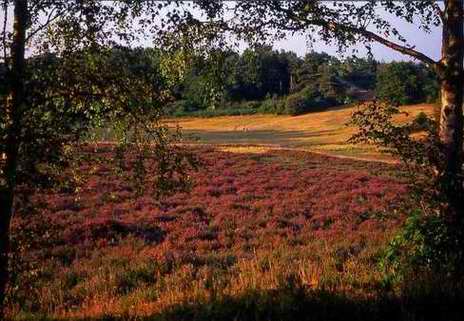 National Trust is aiming to get the heather beds looking like again. All of us who use and enjoy Sullington Warren can help.
National Trust is aiming to get the heather beds looking like again. All of us who use and enjoy Sullington Warren can help.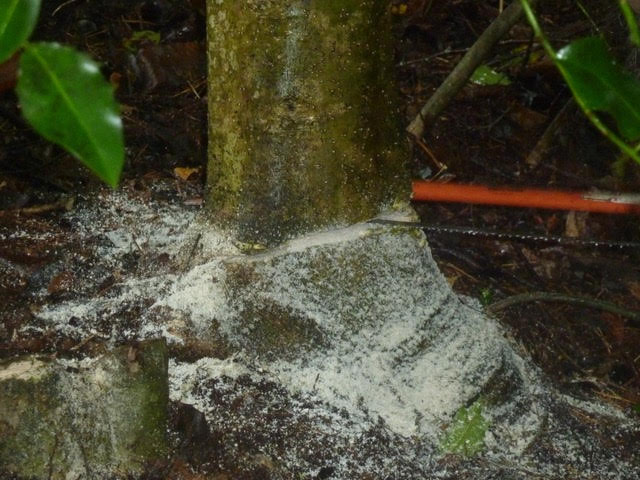
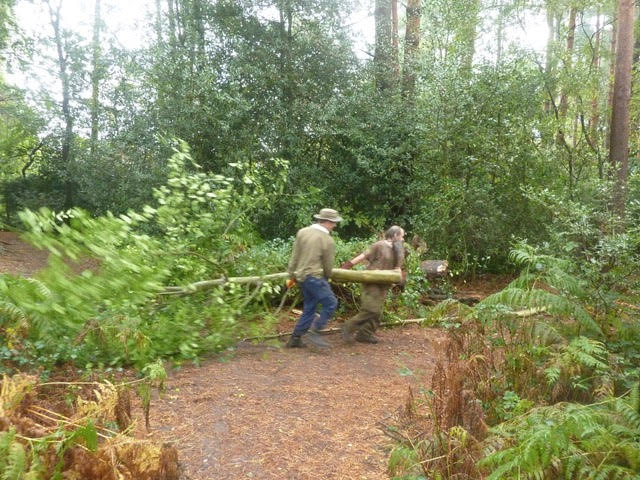
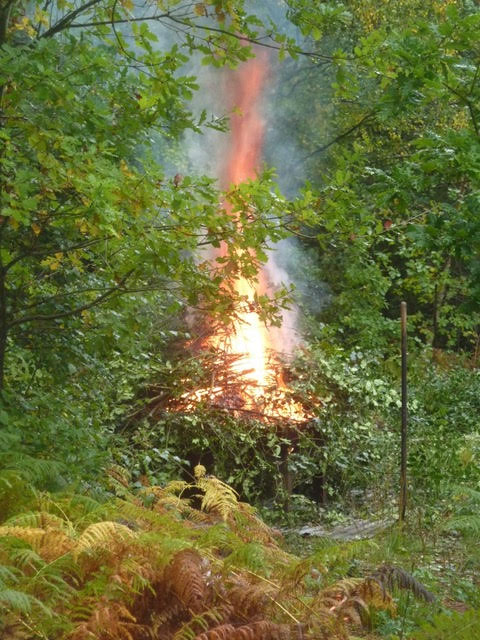
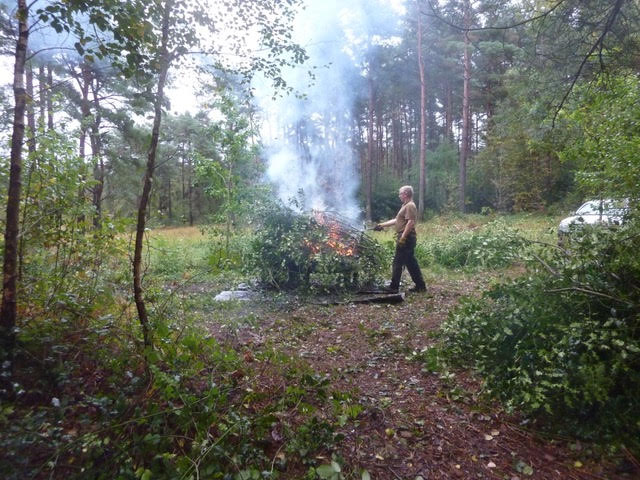
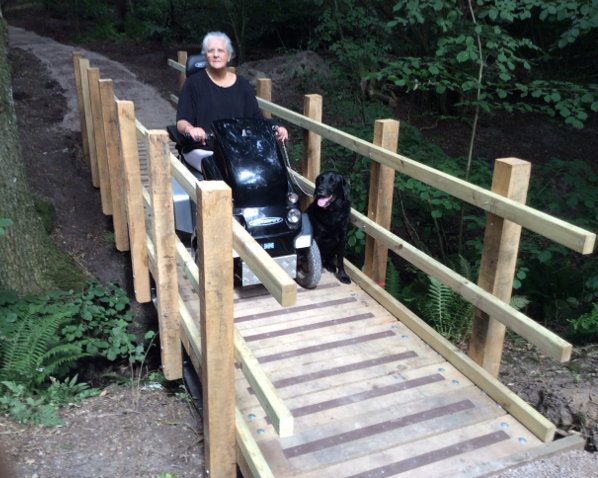
 Regular visitors to Sandgate Park would have seen that within a few days the contractor had cleared away the felled logs, removed the tree stumps and dug out the new path, and created the concrete foundations for the bridge.
Regular visitors to Sandgate Park would have seen that within a few days the contractor had cleared away the felled logs, removed the tree stumps and dug out the new path, and created the concrete foundations for the bridge.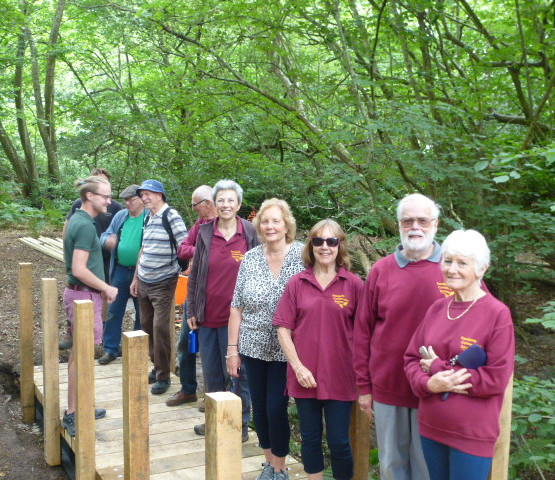 so on Tuesday morning the ‘crew’ gathered for work. Sandgate Conservation Society volunteers were joined by Horsham District Council Parks and Countryside staff. Anna Worthington-Leese, Chairman of Storrington and Sullington Parish Council came along to check out progress.
so on Tuesday morning the ‘crew’ gathered for work. Sandgate Conservation Society volunteers were joined by Horsham District Council Parks and Countryside staff. Anna Worthington-Leese, Chairman of Storrington and Sullington Parish Council came along to check out progress.
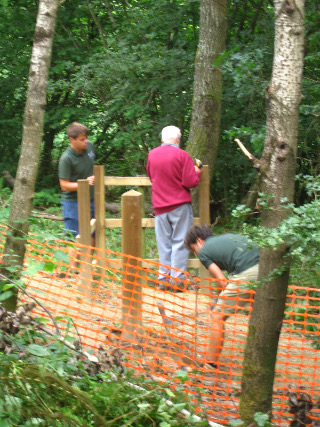
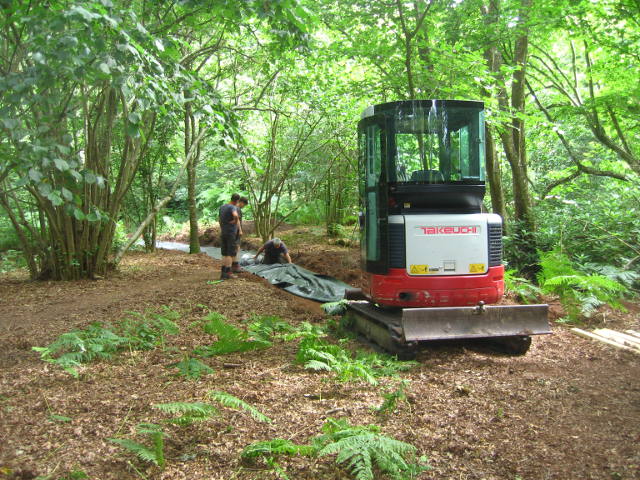 While this activity was going on the contractor was continuing work on the paths. A new path is being created from the new bridge to the gate onto Badgers Holt. This will provide accessible access to the area of Sandgate Park from the eastern end of the park. It is hoped that park users will stick to this new path so that the native bluebells and wild daffodils are not trampled.
While this activity was going on the contractor was continuing work on the paths. A new path is being created from the new bridge to the gate onto Badgers Holt. This will provide accessible access to the area of Sandgate Park from the eastern end of the park. It is hoped that park users will stick to this new path so that the native bluebells and wild daffodils are not trampled.